导出Unity场景的所有游戏对象信息,一种是XML一种是JSON。本篇文章我们把游戏场景中游戏对象的、旋转、缩放、平移与Prefab的名称导出在XML与JSON中。然后解析刚刚导出的XML或JSON通过脚本把导出的游戏场景还原。在Unity官网上下载随便下载一个demo Project,如下图所示这是我刚刚在官网上下载的一个范例程序。
接着将层次视图中的所有游戏对象都封装成Prefab保存在资源路径中,这里注意一下如果你的Prefab绑定的脚本中有public Object 的话 ,需要在代码中改一下。。用 Find() FindTag()这类方法在脚本中Awake()方法中来拿,不然Prefab动态加载的时候无法赋值的,如下图所示,我把封装的Prefab对象都放在了Resources/Prefab文件夹下。
OK,现在我们就需要编写我们的导出工具、在Project视图中创建Editor文件夹,接着创建脚本MyEditor 。如下图所示。
因为编辑的游戏场景数量比较多,导出的时候我们需要遍历所有的游戏场景,一个一个的读取场景信息。然后取得游戏场景中所有游戏对象的Prefab的 名称 旋转 缩放 平移。有关XML的使用请大家看我的上一篇文章: Unity3D 使用 C#合成解析XML与JSON 代码中我只注释重点的部分,嘿嘿。
MyEditor.cs
using UnityEngine;
using System.Collections;
using UnityEditor;
using System.Collections.Generic;
using System.Xml;
using System.IO;
using System.Text;
using LitJson;
public class MyEditor : Editor
{
//将所有游戏场景导出为XML格式
[MenuItem ("GameObject/ExportXML")]
static void ExportXML ()
{
string filepath = Application.dataPath + @"/StreamingAssets/my.xml";
if(!File.Exists (filepath))
{
File.Delete(filepath);
}
XmlDocument xmlDoc = new XmlDocument();
XmlElement root = xmlDoc.CreateElement("gameObjects");
//遍历所有的游戏场景
foreach (UnityEditor.EditorBuildSettingsScene S in UnityEditor.EditorBuildSettings.scenes)
{
//当关卡启用
if (S.enabled)
{
//得到关卡的名称
string name = S.path;
//打开这个关卡
EditorApplication.OpenScene(name);
XmlElement scenes = xmlDoc.CreateElement("scenes");
scenes.SetAttribute("name",name);
foreach (GameObject obj in Object.FindObjectsOfType(typeof(GameObject)))
{
if (obj.transform.parent == null)
{
XmlElement gameObject = xmlDoc.CreateElement("gameObjects");
gameObject.SetAttribute("name",obj.name);
gameObject.SetAttribute("asset",obj.name + ".prefab");
XmlElement transform = xmlDoc.CreateElement("transform");
XmlElement position = xmlDoc.CreateElement("position");
XmlElement position_x = xmlDoc.CreateElement("x");
position_x.InnerText = obj.transform.position.x+"";
XmlElement position_y = xmlDoc.CreateElement("y");
position_y.InnerText = obj.transform.position.y+"";
XmlElement position_z = xmlDoc.CreateElement("z");
position_z.InnerText = obj.transform.position.z+"";
position.AppendChild(position_x);
position.AppendChild(position_y);
position.AppendChild(position_z);
XmlElement rotation = xmlDoc.CreateElement("rotation");
XmlElement rotation_x = xmlDoc.CreateElement("x");
rotation_x.InnerText = obj.transform.rotation.eulerAngles.x+"";
XmlElement rotation_y = xmlDoc.CreateElement("y");
rotation_y.InnerText = obj.transform.rotation.eulerAngles.y+"";
XmlElement rotation_z = xmlDoc.CreateElement("z");
rotation_z.InnerText = obj.transform.rotation.eulerAngles.z+"";
rotation.AppendChild(rotation_x);
rotation.AppendChild(rotation_y);
rotation.AppendChild(rotation_z);
XmlElement scale = xmlDoc.CreateElement("scale");
XmlElement scale_x = xmlDoc.CreateElement("x");
scale_x.InnerText = obj.transform.localScale.x+"";
XmlElement scale_y = xmlDoc.CreateElement("y");
scale_y.InnerText = obj.transform.localScale.y+"";
XmlElement scale_z = xmlDoc.CreateElement("z");
scale_z.InnerText = obj.transform.localScale.z+"";
scale.AppendChild(scale_x);
scale.AppendChild(scale_y);
scale.AppendChild(scale_z);
transform.AppendChild(position);
transform.AppendChild(rotation);
transform.AppendChild(scale);
gameObject.AppendChild(transform);
scenes.AppendChild(gameObject);
root.AppendChild(scenes);
xmlDoc.AppendChild(root);
xmlDoc.Save(filepath);
}
}
}
}
//刷新Project视图, 不然需要手动刷新哦
AssetDatabase.Refresh();
}
//将所有游戏场景导出为JSON格式
[MenuItem ("GameObject/ExportJSON")]
static void ExportJSON ()
{
string filepath = Application.dataPath + @"/StreamingAssets/json.txt";
FileInfo t = new FileInfo(filepath);
if(!File.Exists (filepath))
{
File.Delete(filepath);
}
StreamWriter sw = t.CreateText();
StringBuilder sb = new StringBuilder ();
JsonWriter writer = new JsonWriter (sb);
writer.WriteObjectStart ();
writer.WritePropertyName ("GameObjects");
writer.WriteArrayStart ();
foreach (UnityEditor.EditorBuildSettingsScene S in UnityEditor.EditorBuildSettings.scenes)
{
if (S.enabled)
{
string name = S.path;
EditorApplication.OpenScene(name);
writer.WriteObjectStart();
writer.WritePropertyName("scenes");
writer.WriteArrayStart ();
writer.WriteObjectStart();
writer.WritePropertyName("name");
writer.Write(name);
writer.WritePropertyName("gameObject");
writer.WriteArrayStart ();
foreach (GameObject obj in Object.FindObjectsOfType(typeof(GameObject)))
{
if (obj.transform.parent == null)
{
writer.WriteObjectStart();
writer.WritePropertyName("name");
writer.Write(obj.name);
writer.WritePropertyName("position");
writer.WriteArrayStart ();
writer.WriteObjectStart();
writer.WritePropertyName("x");
writer.Write(obj.transform.position.x.ToString("F5"));
writer.WritePropertyName("y");
writer.Write(obj.transform.position.y.ToString("F5"));
writer.WritePropertyName("z");
writer.Write(obj.transform.position.z.ToString("F5"));
writer.WriteObjectEnd();
writer.WriteArrayEnd();
writer.WritePropertyName("rotation");
writer.WriteArrayStart ();
writer.WriteObjectStart();
writer.WritePropertyName("x");
writer.Write(obj.transform.rotation.eulerAngles.x.ToString("F5"));
writer.WritePropertyName("y");
writer.Write(obj.transform.rotation.eulerAngles.y.ToString("F5"));
writer.WritePropertyName("z");
writer.Write(obj.transform.rotation.eulerAngles.z.ToString("F5"));
writer.WriteObjectEnd();
writer.WriteArrayEnd();
writer.WritePropertyName("scale");
writer.WriteArrayStart ();
writer.WriteObjectStart();
writer.WritePropertyName("x");
writer.Write(obj.transform.localScale.x.ToString("F5"));
writer.WritePropertyName("y");
writer.Write(obj.transform.localScale.y.ToString("F5"));
writer.WritePropertyName("z");
writer.Write(obj.transform.localScale.z.ToString("F5"));
writer.WriteObjectEnd();
writer.WriteArrayEnd();
writer.WriteObjectEnd();
}
}
writer.WriteArrayEnd();
writer.WriteObjectEnd();
writer.WriteArrayEnd();
writer.WriteObjectEnd();
}
}
writer.WriteArrayEnd();
writer.WriteObjectEnd ();
sw.WriteLine(sb.ToString());
sw.Close();
sw.Dispose();
AssetDatabase.Refresh();
}
}
如下图所示,场景导出完毕后,会将xml 与Json 文件保存在StreamingAssets路径下,放在这里的原因是方便移动平台移植,因为它们属于二进制文件,移动平台在读取二进制文件的路径是不一样的。一定要放在这里喔。
接着,我继续创建两个游戏场景,一个用来解析XML的场景,一个用来解析JSON的场景。
XML场景中,创建一个空的游戏对象,把XML.cs挂上去。
using UnityEngine;
using System.Collections;
using System.Xml;
using System.IO;
public class XML : MonoBehaviour {
// Use this for initialization
void Start ()
{
//电脑和iphong上的路径是不一样的,这里用标签判断一下。
#if UNITY_EDITOR
string filepath = Application.dataPath +"/StreamingAssets"+"/my.xml";
#elif UNITY_IPHONE
string filepath = Application.dataPath +"/Raw"+"/my.xml";
#endif
//如果文件存在话开始解析。
if(File.Exists (filepath))
{
XmlDocument xmlDoc = new XmlDocument();
xmlDoc.Load(filepath);
XmlNodeList nodeList=xmlDoc.SelectSingleNode("gameObjects").ChildNodes;
foreach(XmlElement scene in nodeList)
{
//因为我的XML是把所有游戏对象全部导出, 所以这里判断一下只解析需要的场景中的游戏对象
//JSON和它的原理类似
if(!scene.GetAttribute("name").Equals("Assets/StarTrooper.unity"))
{
continue;
}
foreach(XmlElement gameObjects in scene.ChildNodes)
{
string asset = "Prefab/" + gameObjects.GetAttribute("name");
Vector3 pos = Vector3.zero;
Vector3 rot = Vector3.zero;
Vector3 sca = Vector3.zero;
foreach(XmlElement transform in gameObjects.ChildNodes)
{
foreach(XmlElement prs in transform.ChildNodes)
{
if(prs.Name == "position")
{
foreach(XmlElement position in prs.ChildNodes)
{
switch(position.Name)
{
case "x":
pos.x = float.Parse(position.InnerText);
break;
case "y":
pos.y = float.Parse(position.InnerText);
break;
case "z":
pos.z = float.Parse(position.InnerText);
break;
}
}
}else if(prs.Name == "rotation")
{
foreach(XmlElement rotation in prs.ChildNodes)
{
switch(rotation.Name)
{
case "x":
rot.x = float.Parse(rotation.InnerText);
break;
case "y":
rot.y = float.Parse(rotation.InnerText);
break;
case "z":
rot.z = float.Parse(rotation.InnerText);
break;
}
}
}else if(prs.Name == "scale")
{
foreach(XmlElement scale in prs.ChildNodes)
{
switch(scale.Name)
{
case "x":
sca.x = float.Parse(scale.InnerText);
break;
case "y":
sca.y = float.Parse(scale.InnerText);
break;
case "z":
sca.z = float.Parse(scale.InnerText);
break;
}
}
}
}
//拿到 旋转 缩放 平移 以后克隆新游戏对象
GameObject ob = (GameObject)Instantiate(Resources.Load(asset),pos,Quaternion.Euler(rot));
ob.transform.localScale = sca;
}
}
}
}
}
// Update is called once per frame
void Update ()
{
}
void OnGUI()
{
if(GUI.Button(new Rect(0,0,200,200),"XML WORLD"))
{
Application.LoadLevel("JSONScene");
}
}
}接着JSON场景中,创建一个空的游戏对象,把JSON.cs挂上去。
using UnityEngine;
using System.Collections;
using System.IO;
using LitJson;
public class JSON : MonoBehaviour {
// Use this for initialization
void Start ()
{
#if UNITY_EDITOR
string filepath = Application.dataPath +"/StreamingAssets"+"/json.txt";
#elif UNITY_IPHONE
string filepath = Application.dataPath +"/Raw"+"/json.txt";
#endif
StreamReader sr = File.OpenText(filepath);
string strLine = sr.ReadToEnd();
JsonData jd = JsonMapper.ToObject(strLine);
JsonData gameObjectArray = jd["GameObjects"];
int i,j,k;
for (i = 0; i < gameObjectArray.Count; i++)
{
JsonData senseArray = gameObjectArray[i]["scenes"];
for (j = 0; j < senseArray.Count; j++)
{
string sceneName = (string)senseArray[j]["name"];
if(!sceneName.Equals("Assets/StarTrooper.unity"))
{
continue;
}
JsonData gameObjects = senseArray[j]["gameObject"];
for (k = 0; k < gameObjects.Count; k++)
{
string objectName = (string)gameObjects[k]["name"];
string asset = "Prefab/" + objectName;
Vector3 pos = Vector3.zero;
Vector3 rot = Vector3.zero;
Vector3 sca = Vector3.zero;
JsonData position = gameObjects[k]["position"];
JsonData rotation = gameObjects[k]["rotation"];
JsonData scale = gameObjects[k]["scale"];
pos.x = float.Parse((string)position[0]["x"]);
pos.y = float.Parse((string)position[0]["y"]);
pos.z = float.Parse((string)position[0]["z"]);
rot.x = float.Parse((string)rotation[0]["x"]);
rot.y = float.Parse((string)rotation[0]["y"]);
rot.z = float.Parse((string)rotation[0]["z"]);
sca.x = float.Parse((string)scale[0]["x"]);
sca.y = float.Parse((string)scale[0]["y"]);
sca.z = float.Parse((string)scale[0]["z"]);
GameObject ob = (GameObject)Instantiate(Resources.Load(asset),pos,Quaternion.Euler(rot));
ob.transform.localScale = sca;
}
}
}
}
// Update is called once per frame
void Update () {
}
void OnGUI()
{
if(GUI.Button(new Rect(0,0,200,200),"JSON WORLD"))
{
Application.LoadLevel("XMLScene");
}
}
}
本例的下载地址:http://download.csdn.net/detail/e295166319/9664828
最近在做客户端与服务器的交互,使用JSON 和XML会感觉数据量太大,影响效率。最后使用二进制的方式来完成。如下图所示,使用二进制可以把空间节省到803K ,是不是很不错呢? 下面我们开始学习如何制作吧。

导出场景时增加导出二进制文件选项,代码如下。
[MenuItem ("GameObject/BINARY")]
static void XMLJSONTOBinary ()
{
string filepath = Application.dataPath + @"/StreamingAssets/binary.txt";
if(File.Exists (filepath))
{
File.Delete(filepath);
}
FileStream fs = new FileStream(filepath, FileMode.Create);
BinaryWriter bw = new BinaryWriter(fs);
foreach (UnityEditor.EditorBuildSettingsScene S in UnityEditor.EditorBuildSettings.scenes)
{
if (S.enabled)
{
string name = S.path;
EditorApplication.OpenScene(name);
foreach (GameObject obj in Object.FindObjectsOfType(typeof(GameObject)))
{
if (obj.transform.parent == null)
{
//注解 直接写入字符串
bw.Write(name);
bw.Write(obj.name);
short posx = (short)(obj.transform.position.x * 100);
bw.Write(posx);
bw.Write((short)(obj.transform.position.y * 100.0f));
bw.Write((short)(obj.transform.position.z * 100.0f));
bw.Write((short)(obj.transform.rotation.eulerAngles.x * 100.0f));
bw.Write((short)(obj.transform.rotation.eulerAngles.y * 100.0f));
bw.Write((short)(obj.transform.rotation.eulerAngles.z * 100.0f));
bw.Write((short)(obj.transform.localScale.x * 100.0f));
bw.Write((short)(obj.transform.localScale.y * 100.0f));
bw.Write((short)(obj.transform.localScale.z * 100.0f));
}
}
}
}
bw.Flush();
bw.Close();
fs.Close();
}注解
在写入二进制数据时用到的核心类就是BinaryWriter ,Binary是二进制的意思 ,可见操作二进制写入就用BinaryWriter了。 常用的数据类型会分配固定的字节数量,假设BinaryWriter 写入一个short 那么就占2字节,写一个 int 就占4字节,如果是数组的话需要数组类型字节长度在乘以数组长度。
byte:一个字节(8位)
short:两个字节(16位)
int:四个字节(32位)(一个字长)
long:八个字节(64位)
float:四个字节(32位)
double:八个字节(64位)
然后在说说string,字符串它并不是标准的数据类型,它是一个对象 object 那么它的字节长度就是可变的。开始我也在string 上纠结了一小会儿。还有BinaryWriter 在写入string 的时候会现将字符串的长度以byte的形式储存,然后在储存字符串的字节长度。那么在解析字符串的时候需要先解析字符串长度,然后在根据长度取得后面对应长度的字节数组,再把这个字节数组转换成string就行啦。还有,上面我用的是short x 100 其实上为了节省长度, 因为short是2字节,float是4字节。我在解析的时候用short 在除以100 就可以 换算成float拉。
然后我们在看看解析的代码,写入的时候我们用的是BinaryWriter 那么读取的时候应该是 BinaryReader。
Binary.cs
using UnityEngine;
using System.Collections;
using System.IO;
using System.Text;
using System;
public class Binary : MonoBehaviour
{
void Start ()
{
string filepath = Application.dataPath + @"/StreamingAssets/binary.txt";
if(File.Exists (filepath))
{
FileStream fs = new FileStream (filepath,FileMode.Open);
BinaryReader br = new BinaryReader(fs);
int index = 0;
//将二进制字节流全部读取在这个byte数组当中
//ReadBytes传递的参数是一个长度,也就是流的长度
byte[] tempall = br.ReadBytes((int)fs.Length);
//开始解析这个字节数组
while(true)
{
//当超过流长度,跳出循环
if(index >= tempall.Length)
{
break;
}
//得到第一个byte 也就是得到字符串的长度
int scenelength = tempall[index];
byte []sceneName = new byte [scenelength];
index += 1;
//根据长度拷贝出对应长度的字节数组
System.Array.Copy(tempall,index,sceneName,0,sceneName.Length);
//然后把字节数组对应转换成字符串
string sname = System.Text.Encoding.Default.GetString(sceneName);
//这里和上面原理一样就不赘述
int objectLength = tempall[index + sceneName.Length];
byte []objectName = new byte [objectLength];
index += sceneName.Length + 1;
System.Array.Copy(tempall,index,objectName,0,objectName.Length);
string oname = System.Text.Encoding.Default.GetString(objectName);
//下面就是拿short 每一个short的长度是2字节。
index += objectName.Length;
byte[] posx = new byte[2];
System.Array.Copy(tempall,index,posx,0,posx.Length);
//取得对应的数值 然后 除以100 就是float拉。
float x = System.BitConverter.ToInt16(posx,0) /100.0f;
//下面都差不多
index += posx.Length;
byte[] posy = new byte[2];
System.Array.Copy(tempall,index,posy,0,posy.Length);
float y = System.BitConverter.ToInt16(posy,0) /100.0f;
index += posy.Length;
byte[] posz = new byte[2];
System.Array.Copy(tempall,index,posz,0,posz.Length);
float z = System.BitConverter.ToInt16(posz,0) /100.0f;
index += posz.Length;
byte[] rotx = new byte[2];
System.Array.Copy(tempall,index,rotx,0,rotx.Length);
float rx = System.BitConverter.ToInt16(rotx,0) /100.0f;
index += rotx.Length;
byte[] roty = new byte[2];
System.Array.Copy(tempall,index,roty,0,roty.Length);
float ry = System.BitConverter.ToInt16(roty,0) /100.0f;
index += roty.Length;
byte[] rotz = new byte[2];
System.Array.Copy(tempall,index,rotz,0,rotz.Length);
float rz = System.BitConverter.ToInt16(rotz,0) /100.0f;
index += rotz.Length;
byte[] scax = new byte[2];
System.Array.Copy(tempall,index,scax,0,scax.Length);
float sx = System.BitConverter.ToInt16(scax,0) /100.0f;
index += scax.Length;
byte[] scay = new byte[2];
System.Array.Copy(tempall,index,scay,0,scay.Length);
float sy = System.BitConverter.ToInt16(scay,0) /100.0f;
index += scay.Length;
byte[] scaz = new byte[2];
System.Array.Copy(tempall,index,scaz,0,scaz.Length);
float sz = System.BitConverter.ToInt16(scaz,0) /100.0f;
index+=scaz.Length;
if(sname.Equals("Assets/StarTrooper.unity"))
{
//最后在这里把场景生成出来
string asset = "Prefab/" + oname;
Vector3 pos = new Vector3 (x,y,z);
Vector3 rot = new Vector3(rx,ry,rz);
Vector3 sca = new Vector3(sx,sy,sz);
GameObject ob = (GameObject)Instantiate(Resources.Load(asset),pos,Quaternion.Euler(rot));
ob.transform.localScale = sca;
}
}
}
}
// Update is called once per frame
void Update ()
{
}
}
最后把代码放出来,晚安 Good Ngith 哇咔咔。
下载地址 :http://vdisk.weibo.com/s/la_QE
留言中刚好有人讨论到这块。另外还有一种方式也可以实现动态增加建立场景,使用.unity 来实现场景的加载,我觉得这种方式可能会更好一些。我在网上已经发现有人写了,那就转载过来吧。
原文地址:http://blog.csdn.net/cony100/article/details/8842919
在Unity3d中,场景(scene)多半通过在build settings中点击add current或者把场景拖进面板实现,假如不这么做,你的场景便不会被加载,哪怕你制定了绝对路径。
就是说,一个游戏里要加载多少场景多半都是固定的。
这样的方法会有很多不便,不容易动态加载场景。所以我们今天要说的,是一种动态加载场景的方法。
首先,你需要一个编辑器文件,放在editor文件夹下。注意,这个文件不可以继承自monobehaviour
public class BuildSceneEditor{
[@MenuItem("build/BuildWebplayerStreamed")]
static void Build(){
string[] levels = new string[]{"Assets/Level1.unity","Assets/Level2.unity"};
BuildPipeline.BuildStreamedSceneAssetBundle(levels,"streamed.unity3d",BuildTarget.WebPlayer);
}
}
WWW download = WWW.LoadFromCacheOrDownload("http://xxx/streamed.unity3d",0);
yield return download;
Application.LoadLevel("Level1");大家注意到了吗。下载好以后就可以直接loadlevel了,不需要手动进行add current的操作了。
这里还有一篇圣典翻译的文章 http://game.ceeger.com/Script/BuildPipeline/BuildPipeline.BuildStreamedSceneAssetBundle.html
最后我在补充一下使用.unity3d确实方便很多,因为它不仅会把场景打包进去,并且还会把场景中对应的资源文件打包进去。举个例子,你将美工做好的模型文件放在Project视图中,然后在将模型放在Hierarchy视图中的 100,100,100坐标点中,最后把该场景打包成.unity3d文件。此时你在新建一个工程只需下载刚刚打包的场景文件,他会自动把模型放在 100,100,100坐标点中。
这说明场景文件,包含了该场景中所用到的所有模型,并且还包含了模型资源与Hierarchy视图的关系。它会带来一个弊端,比如你有N个场景,每个场景中都有相同的模型文件,这样每个场景都需要重复下载这些相同的模型文件,所以我觉得最好还是使用assetbundle来对同类的资源文件进行分包处理。








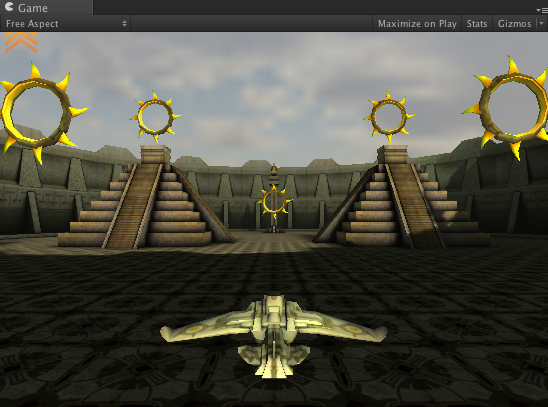
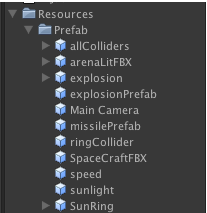
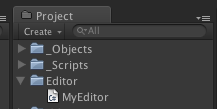


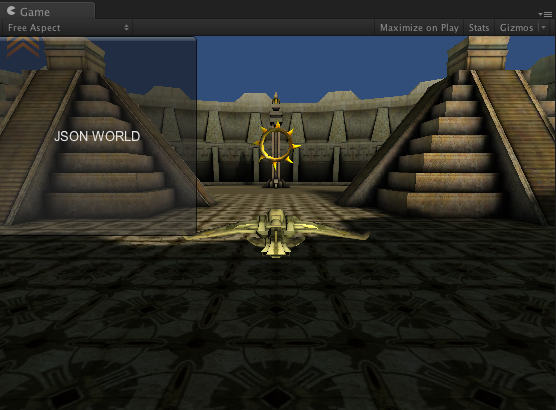
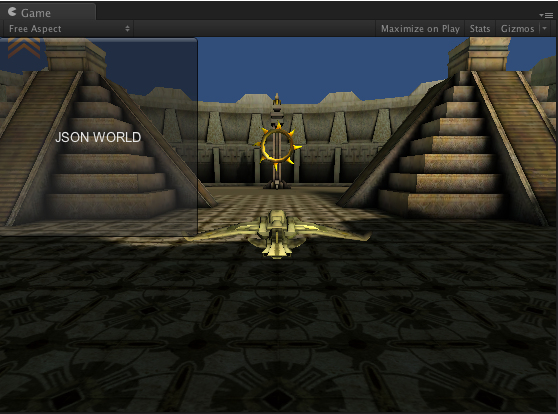














 1838
1838

 被折叠的 条评论
为什么被折叠?
被折叠的 条评论
为什么被折叠?








